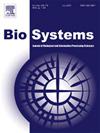从记忆障碍到抑郁症的发展:一个系统的方法。
IF 2
4区 生物学
Q2 BIOLOGY
引用次数: 0
摘要
本文从行为控制的整体功能系统的角度,提出了一个解释抑郁症发展的起源和成因的假说。功能系统的核心是记忆装置,所有其他行为控制系统的关键组成部分(感觉信息、动机、强化和运动活动)都是在记忆装置上相互联系的。在记忆痕迹(印痕)的组织中,有感觉和动机两种输入,刺激-刺激(S-S)和刺激-运动(S-R)印痕通过这两种输入形成。这些印记是通过感觉信息的皮层表征和大脑动机结构之间的正向和反向条件连接来组织和实现的。通过从强化(情绪)输入到记忆装置的反馈连接,S-S和S-R图根据奖励或消极事件的强度得到巩固或削弱。抑郁症始于记忆机制的崩溃。这些问题与上述三种记忆输入有关:感觉、动机和强化(情感)。感觉和动机输入的中断导致无法形成新的记忆印痕,它们的实现和检索。这就造成了解决当前和过去未解决问题的困难,导致问题的积累和解决困难增加。未解决的任务导致强化输入的减弱,并进一步损害作用记忆的巩固。强化输入减弱的另一个原因是直接有害事件的过度行为或持续的慢性压力。这篇综述介绍了目前的文献和我们实验室的一些数据,支持每种记忆输入的贡献及其对抑郁症发展的影响,当它们成为问题时。本文章由计算机程序翻译,如有差异,请以英文原文为准。
From memory disorders to the development of depression: A system approach
In this review, a hypothesis explaining the origin and genesis of depression development from the perspective of a holistic functional system of behavioral control is proposed. The core of the functional system is the memory apparatus, on which all other key components of the behavioral control system (sensory information, motivation, reinforcement, and motor activity) are interlocked. In the organization of memory traces (engrams) there are two inputs, sensory and motivational, through which the stimulus-stimulus (S-S) and stimulus-motor (S-R) engrams are formed. These engrams are organized and actualized by means of forward and backward conditional connections between cortical representations of sensory information and motivational structures of the brain. Through feedback connections from reinforcing (emotional) input to the memory apparatus, the S-S and S-R engrams are consolidated or weakened depending on the strength of reward or negative events. Depression begins with a breakdown in memory mechanisms. These breakdowns are related to problems with the three mentioned memory inputs: sensory, motivational, and reinforcing (emotional). Disruptions in sensory and motivational input lead to an inability to form new memory engrams, their actualization and retrieval. This creates difficulty in solving current and past unresolved problems, eliciting more accumulation and increasing difficulties in their solving. Unresolved tasks lead to weakening of the reinforcing input, and further impairment of consolidation of the acting engrams. Another reason for the weakening of reinforcing input is excessive action of directly harmful events or constant chronic stress. The review presents the current literature and some data from our laboratory in favor of each memory input's contribution and their impact on the development of depression, when they are problematic.
求助全文
通过发布文献求助,成功后即可免费获取论文全文。
去求助
来源期刊

Biosystems
生物-生物学
CiteScore
3.70
自引率
18.80%
发文量
129
审稿时长
34 days
期刊介绍:
BioSystems encourages experimental, computational, and theoretical articles that link biology, evolutionary thinking, and the information processing sciences. The link areas form a circle that encompasses the fundamental nature of biological information processing, computational modeling of complex biological systems, evolutionary models of computation, the application of biological principles to the design of novel computing systems, and the use of biomolecular materials to synthesize artificial systems that capture essential principles of natural biological information processing.
 求助内容:
求助内容: 应助结果提醒方式:
应助结果提醒方式:


